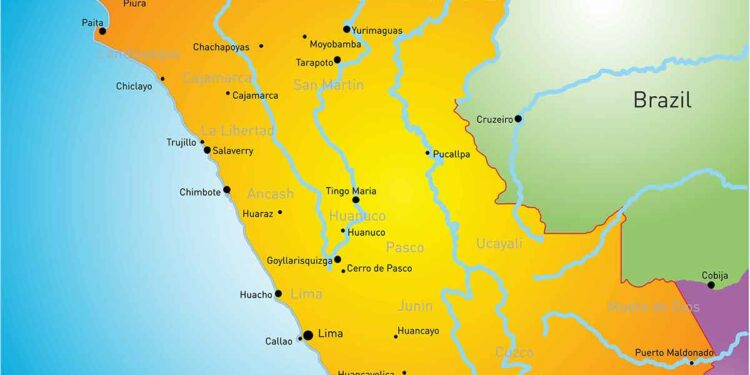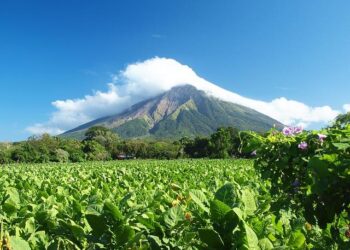Cusco is the gateway to Mache Picchu, the 15th Century symbol of the Inca Empire, at over 7,000 feet (2130 metres) in the Andes.
Machu Picchu is a UNESCO World Heritage Site and one of today’s Seven Wonders of the World.
It is just 50 miles (80 kms) from Cusco which is a flight of around 90 minutes from Lima.
Cusco was the Inca capital and it is an interesting city in itself.
You will see Spanish colonial architecture as well as ruins from the time of the Incas.
The population approaches half a million so you can expect an infrastructure well able to cater for tourists.
Recommended tours:
Stay at: Palacio Nazarenas, A Belmond Hotel, Cusco
3- Arequipa
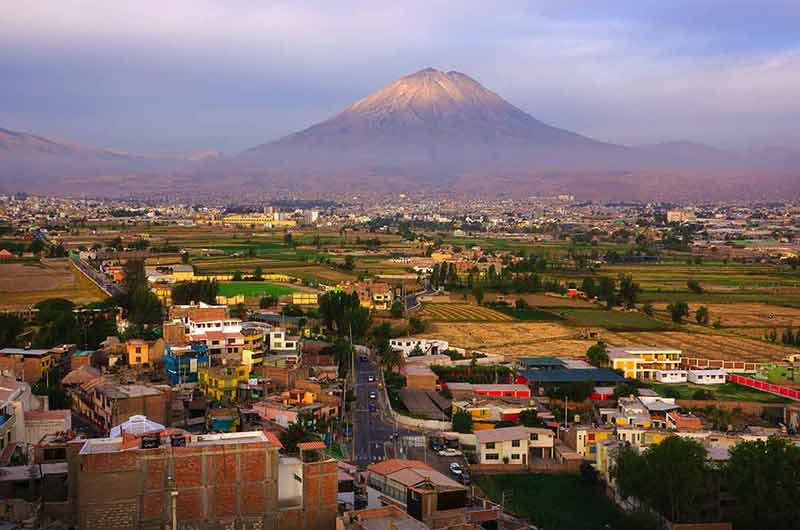
This city of Peru is in the far south of the country close to the border with Chile.
In terms of population (1.3 million) it is Peru’s second city.
Arequipa is an important industrial and commercial city in Peru.
It is another settlement formed and developed by the Spanish although the region was occupied by nomads who survived by hunting, gathering and fishing.
Textiles are now its most important economic activity.
UNESCO recognised its importance in historical and cultural terms and tourists will enjoy the architecture in the heart of the city.
Look up and you will see the skyline dominated by volcanoes; you are already at around 7,000 feet (2130 metres) if you are in Arequipa.
Recommended tour:
Stay at: Sonesta Hotel Arequipa
4- Puno
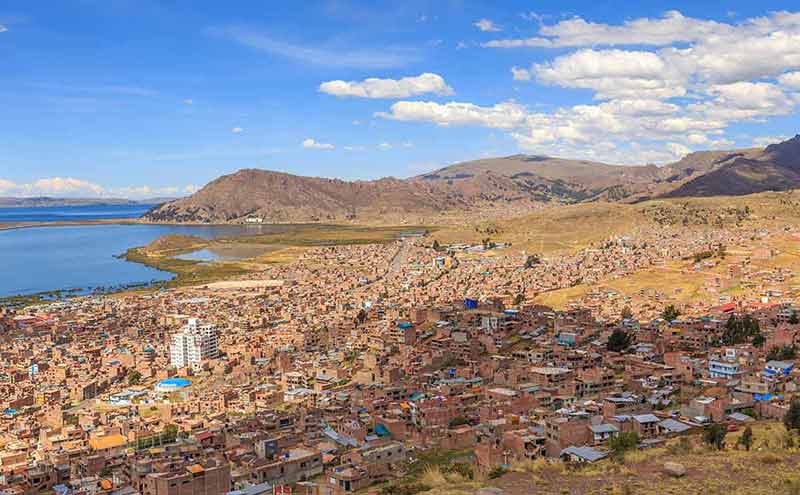
Lake Titicaca is one of Peru’s popular attractions and Puno sits on is southern bank.
It is a city famous for its festivals, hence the nickname “folklore capital” of Peru.
It is at over 3,800 metres (12,500 feet) above sea level with the Lake known as the highest piece of navigable water in the world.
Puno is one of Peru’s smaller cities (130,000 population) yet it has a number of interesting landmarks as well as being on an interesting stretch of water.
Puno developed from the second half of the 17th Century and is an important centre of agriculture and livestock (including llamas and alpacas).
Recommended tour:
Stay at: Urus Beluxia
5- Nazca
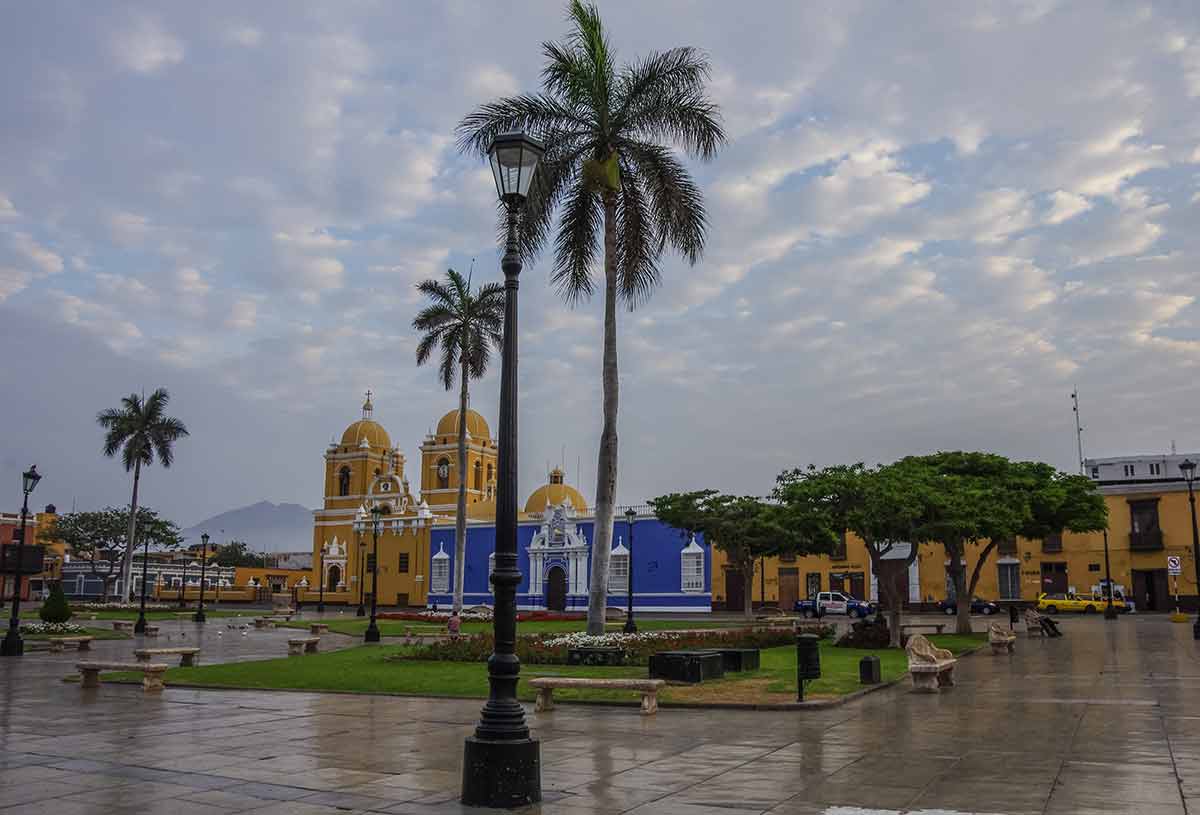
Nazca is a coastal city in Southern Peru, its name that of a culture that existed there for centuries beginning in the first century BC.
During the time of the Spanish, it was known for its wine and brandy production.
It is a dry region and tourists who research natural landmarks in South America will know about the Nasca Lines, ancient drawings They are best viewed from the air and tour companies offer flights from the small local airport.
There are theories about the origin and designs of the lines though no creator had the luxury of air travel to see what was being created.
From the air, you will see flora and fauna with the lines often as wide as 30 metres (almost 100 feet).
Recommended tour: Nazca Lines flight tour
Stay at: Hospedaje el Telar
6- Trujillo

Trujillo on the banks of the Moche River in Peru’s north west is Peru’s third city in terms of population.
Prior to conquest by the Incas, Trujillo was home to two cultures, the Chimu and the Moche.
The region became independent from the Spanish in the 1820s and the city is regarded as the home of Peruvian judiciary and has been the national capital on two occasions.
Its cultural fame is a result of it being home to the country’s traditional dance, the Marinera and during the year, several festivals take place in the city.
UNESCO recognises nearby Chan Chan and Chamu, the largest adobe city from ancient times while the temples of the Sun and Moon are Peru’s largest adobe pyramid.
Recommended tour: Full Day Trujillo Huacas Del Sol – Luna Y Chan Chan
Stay at: Tierra Viva Trujillo
7- Chiclayo
Chiclayo in the north lies just a short distance from the Pacific Coast.
The 16th Century Spanish named it as “Santa MarĂa de los Valles de Chiclayo” and in common with much of today’s Peru, it won independence from the colonials in the first half of the 19th Century.
Its population approaches three quarters of a million and one of the attractions for visitors is the nearby archaeological site of the ruins of the Wari Empire that existed between the 7th and 12th centuries.
It has good transport links, including international flights as far as the USA.
There are a number of important landmarks in the city including the Cathedral in the main square, La Veronica’s Chapel and the Basilica San Antonio.
Recommended tour: Excursion Sicán, Túcume Pyramids and historic and monumental Lambayeque
Stay at: Cerca al aeropuerto, bancos, RP
8- Piura
Piura, in northwest sits on the Piura River within the Sechura Desert.
It was one of the very early cities founded by the Spanish and today’s population approaches half a million.
Francisco Pizarro chose the site for a city and it was three centuries before the Spanish finally left.
Prior to the arrival of the Spanish, several indigenous cultures existed here.
The city’s development included elements of them, the Spanish, the African slaves brought over by the colonists and Romany pirates in search of pearls.
The climate is hot all year around so if you want to explore, carry water with you.
Recommended tour: Piura and Catacaos one day
Stay at: Holiday Inn – Piura
9- Huancayo
The capital of the Central Highlands, Huancayo is in the Mantaro Valley yet sits at over 3,250 metres (more than 10,500 feet).
It is the main cultural and commercial centre in the Peruvian Andes and settlement here dates back to around 500 BC.
Much later, it was conquered by firstly the Incas and subsequently the Spanish.
Its cathedral was not begun until the Spaniards were actually expelled.
Another notable date in Huancayo’s history was 1854 because it was in the city that slavery was formally abolished; 1854 and the statue in the Plaza Constitucion commemorates this event.
Recommended tour: The best of Huancayo walking tour
Stay at: Fresnos 891
10- Chimbote
This coastal city lies between Lima and Trujillo and acts as capital of the Santa Province.
Its location on the North Pan-American Highway means it has excellent transport links with both.
It was no more than a village at the time the Spanish left and did not begin to grow until the middle of the 20th Century with the development of a railroad and then a power station.
It is the centre known for its association with fishing and associated industries.
Its major landmark is the Catedral Nuestra Señora del Carmen y San Pedro Apóstol where visitors cannot fail to be impressed by the wonderful religious art.
Recommended tour: The best of Chimbote walking tour
Stay at: DEPARTAMENTO con COCHERA en Chimbote
11- Iquitos
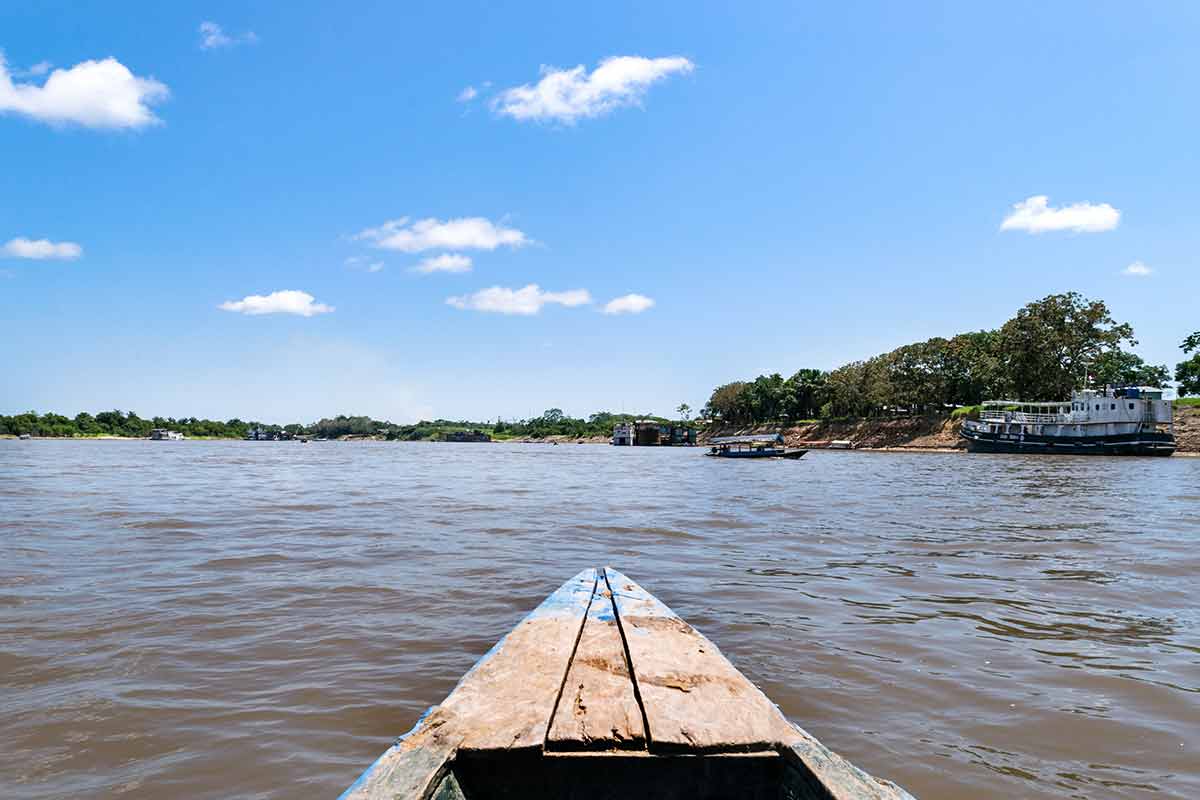
Iquitos is the largest Peruvian city in the Amazon and is hence the entry point for visitors wanting to explore in the Amazon jungle.
It is actually not accessible by road; it is river or water for visitors.
It is home to around 470,000 who live in one of its four districts.
Its population has been largely indigenous although the Jesuit Church was established by the Spanish in the 18th Century.
Rubber production and export were the reasons behind the boom in population yet its decline as production in SE Asia grew meant many left to find work elsewhere.
Industry diversified so today timber, fish, minerals and oil all play major roles in the economy.
Recommended tour: 3-Day Iquitos Amazon Jungle Adventure at Heliconia Lodge
Stay at: Morona Flats & Pool
12- Tacna
This southern Peruvian city is an important economic centre located half an hour away from the border with Chile.
Its association with patriotism manifests itself with a number of monuments and streets taking the names of heroes from the independence struggle in the early 1820s and the War of the Pacific 6 decades later.
This region was actually under Chilean control for half a century.
Sodium Nitrate is the main one of a number of resources found locally and a significant number of Italians made their homes in Tacna.
Visitors interested in landmarks will find plenty in Tacna, as well as interesting museums.
Stay at: Le Prince Apart Tacna
13- Juliaca
Juliaca in the south east of Peru sits on a plateau north west of Lake Titicaca and close to Lake Chacas, the ruins of Sillustani and the Maravillas River.
The annual highlight in Juliaca is its carnival held in February/March.
It is certainly a time to head there to see the colour in the costumes, and experience the music and the dancing.
In January there is also Saint Sebastian’s feast.
Its nickname is the “windy city” although other nicknames come about because of its association with wool, and fabric and clothes in general.
In addition to the attraction of the region in general, there are notable landmarks to see; Santa Cataline Church, La Merced Church, and the Franciscan Covent being those involved in religion.
Stay at: Departamentos KIRI
14- Ica
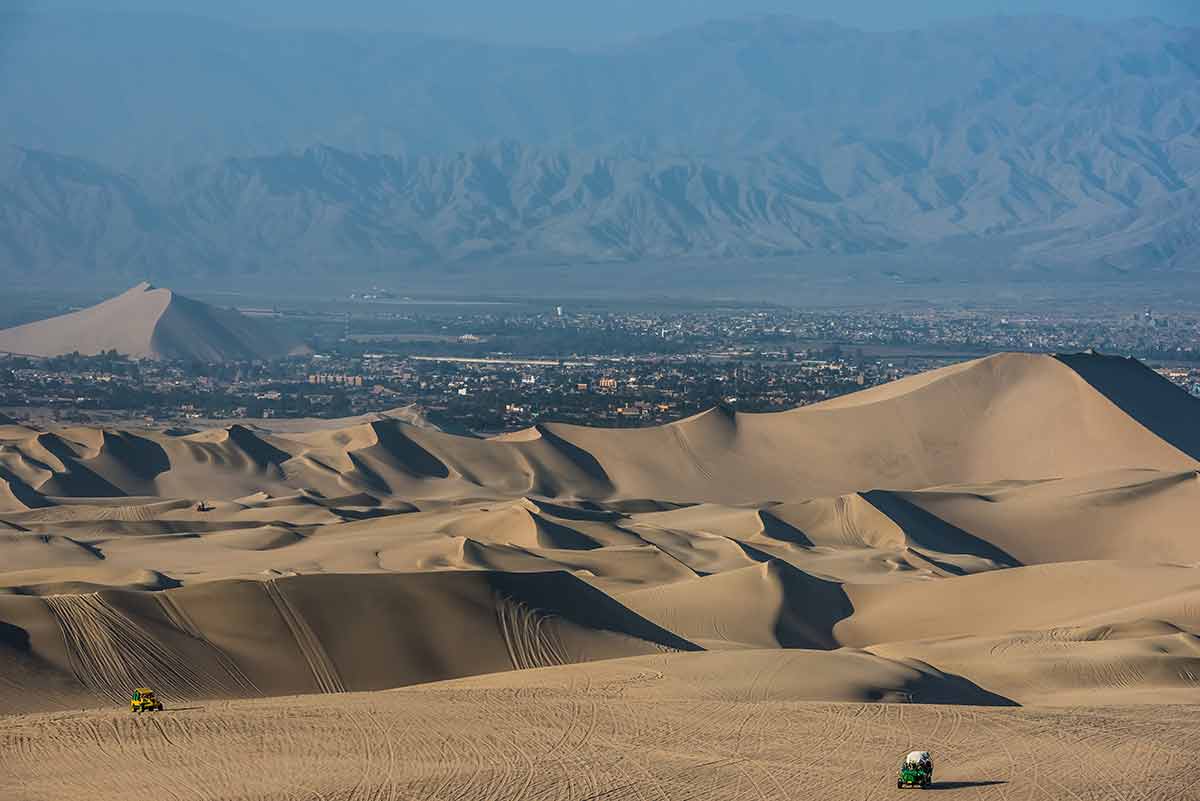
This city on the Ica River is 300 kilometres (190 miles) south of Lima on the border with the Atacama Desert.
Ica has a long and interesting history but in more recent times, it is remembered because of the major problems brought about by the earthquake in 2007, causing extensive damage and loss of life.
It measured a huge 8.0 on the Richter Scale.
A fossil found nearby has been dated around 30 million years old; a penguin almost 5 feet (152 cm) high with a huge beak.
The Incas controlled this district before the Spanish arrived with independence achieved in 1821.
Recommended tour:
Stay at: Hotel Viñas Queirolo
15- Cajamarca
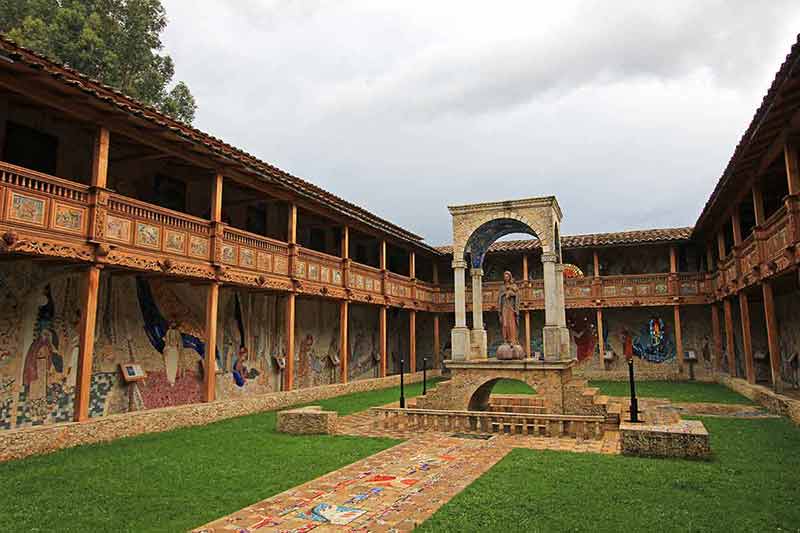
Cajamarca lies in the Northern Andes at a height of 2,750 metres (8,900 feet).
The region is very fertile and as a result is known for its agriculture, especially dairy produce.
Mining is also an important contributor to its economy.
There are several examples of Spanish architecture to see as well as ancient archaeological sites to visit.
Add the lovely scenery and the hot springs in nearby Banos del Inca and there are several reasons for visitors to add this city to their itinerary.
This is also the location for a battle that saw the Spaniards defeat the Incas after which their Emperor, Atahualpa, was executed.
Recommended tour: Cajamarca Classical 3 days and 2 nights
Stay at: Casa de Campo Santa Rosa
16- Pucallpa
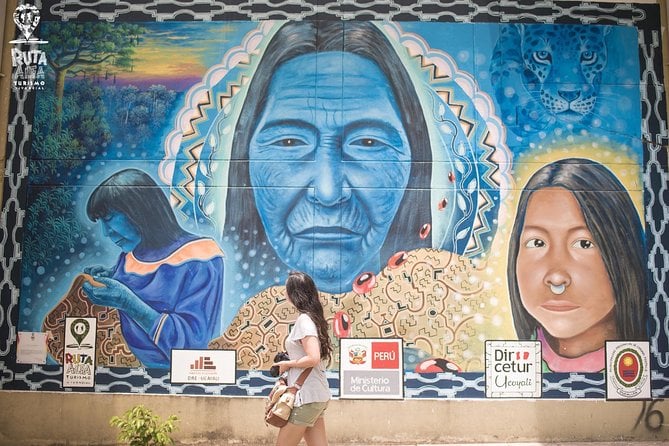
Pucallpa is found on the banks of a major Amazon tributary, the Ucayali River in Eastern Peru.
Over 200,000 live here, making it the second largest “Amazon” city after Iquitos.
Transport is largely by river although there is a highway to its airport which provides links elsewhere in Peru as well as to Brazil.
The road link to the capital, Lima is important but there are regular issues with transport during the rainy season.
Timber is its main economic activity but increasingly ecotourism is becoming important.
Fishing, agriculture, including livestock, also contribute to the economy.
Recommended tour: Pucallpa art, photography and culture tour
Stay at: Auditorio & Centro de Capacitaciones Central Park Pucallpa
17- Sullana
This city in the north west has a tropical savannah climate, a pleasant average of 27C, and rarely down as far as 16C.
Sullana is in a very fertile region with lush vegetation, palms, bananas, paddy fields and land on which they grow cotton.
Sugar cane is grown here as well.
Its population has been growing in recent decades and has now reached 165,000.
If you are interested in water sports, this is the place for you; water skiing, and boating as well as simply fishing and swimming in the nearby Poechos Reservoir.
If you are in Sullana in January, you will have the change to celebrate with the locals at the Feria Internacional de la Reyes.
Stay at: Hotel Plaza Sullana
18- Ayacucho
Ayacucho was the site of a major victory by Simon Bolivar against the Royalists in 1825 during the independence struggle that very much decided the outcome.
The name change happened then, with the word honouring those who died in the struggle.
The city has a massive 33 churches, the significance being the number of years Jesus lived on earth.
Not surprisingly, religion is very important in the city with Easter being especially significant.
Horse racing and the running of the bulls form part of the Easter celebrations.
Recommended tour: Full–Day Turquoise Waters Millpu
Stay at: CASTELLARES LA PUEBLA APARTAMENT
19- Chincha
Chincha is one of Peru’s smaller cities with a population below 60,000.
It is close to the city of Ica and sits at the mouth of the river of the same name.
Lima is 200 kilometres (125 miles) to the north.
Humans have lived here since the 9th Century, living by fishing and collecting shells.
Subsequently, trade links were established as far north as Central America.
The Incas and then the Spanish ruled with African slaves largely replacing the locals.
Afro-Peruvian culture has flourished and makes the city a little different from others in Peru; think music, cuisine and dance.
This was another city where the 2007 earthquake caused extensive problems.
Stay at: Hotel Hatun Chincha
20- Huanuco
in Central Peru, Huanaco is a city with a population approaching 200,000.
Its position is where the Higueras and Huallaga Rivers meet.
Gomez de Alvarado founded the city in 1539, on the site where the Inca city of Yarowilca once stood.
One stain on its history was one of the Chilean massacres in the 1880s before Chile was finally removed from what is now Peruvian territory.
It has its own airport and lies on the road that links Lima to the Amazonian part of Peru.
Recommended tour: Full-Day Guided Tour of Huanuco and Tingo Maria
Stay at: Moderno Dpto
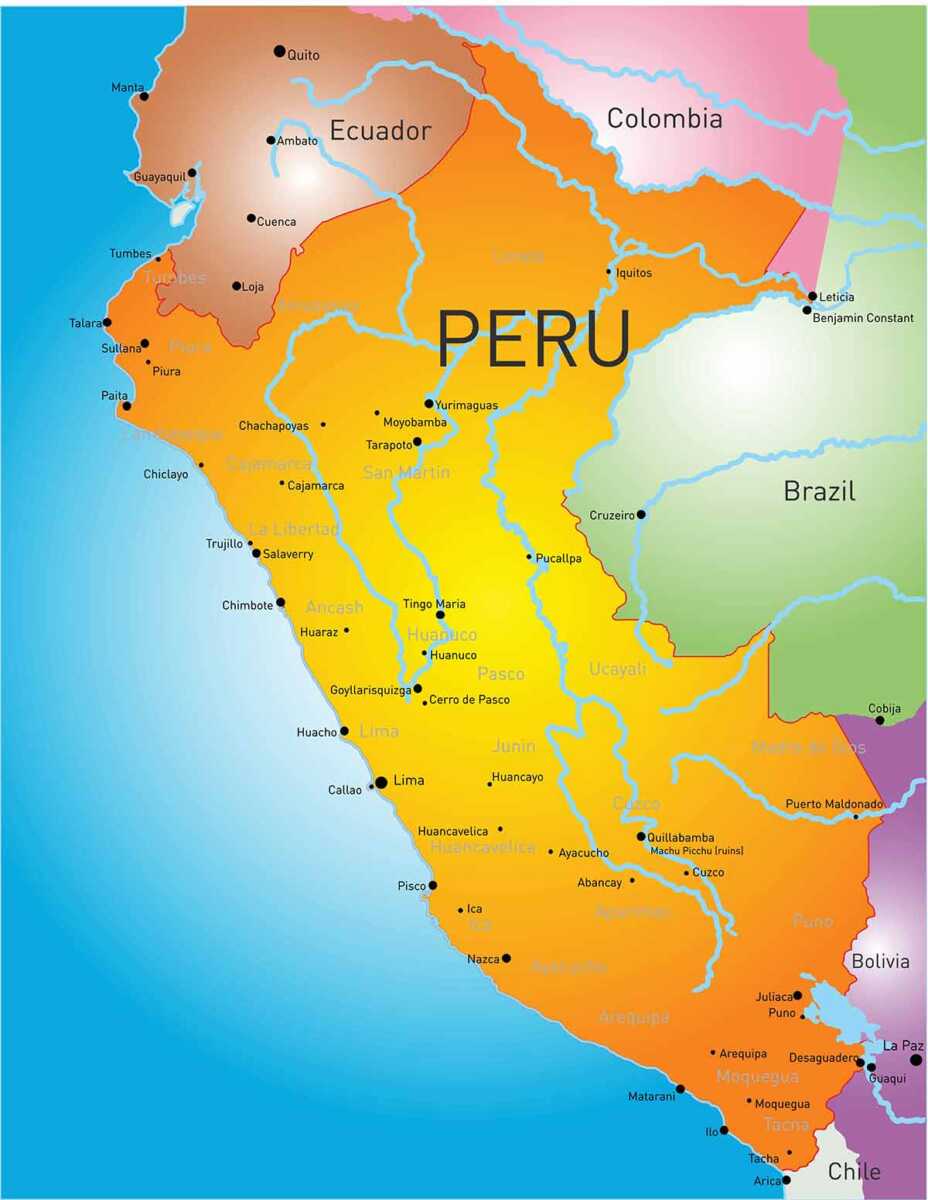
For more cities in Latin America, see:
Source link : http://www.bing.com/news/apiclick.aspx?ref=FexRss&aid=&tid=6729b622b93849e2943023fdd89e7f63&url=https%3A%2F%2Ftravel2next.com%2Fperu-cities-towns%2F&c=137551793244076618&mkt=en-us
Author :
Publish date : 2024-11-04 16:33:00
Copyright for syndicated content belongs to the linked Source.

